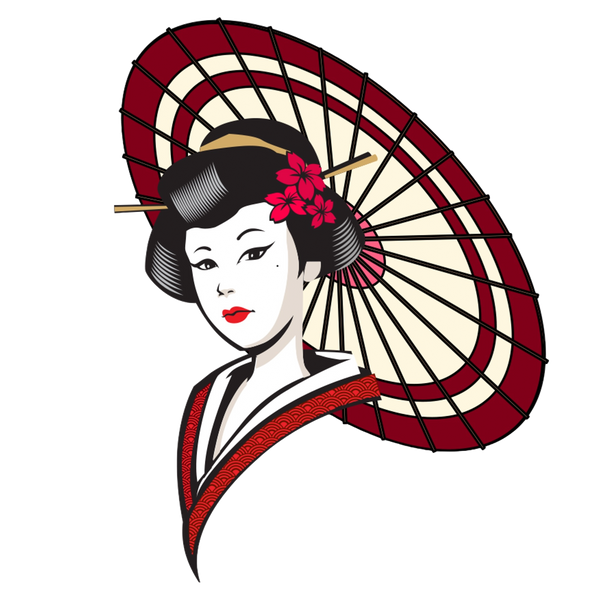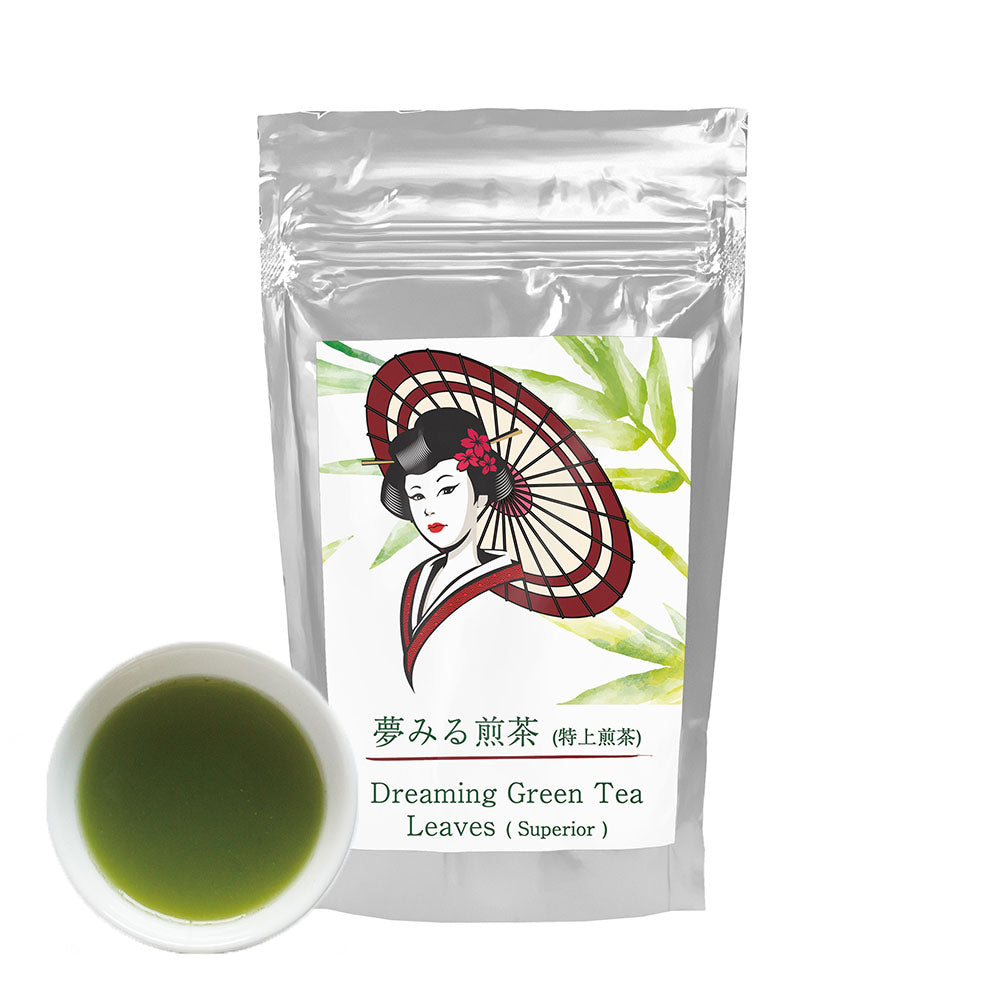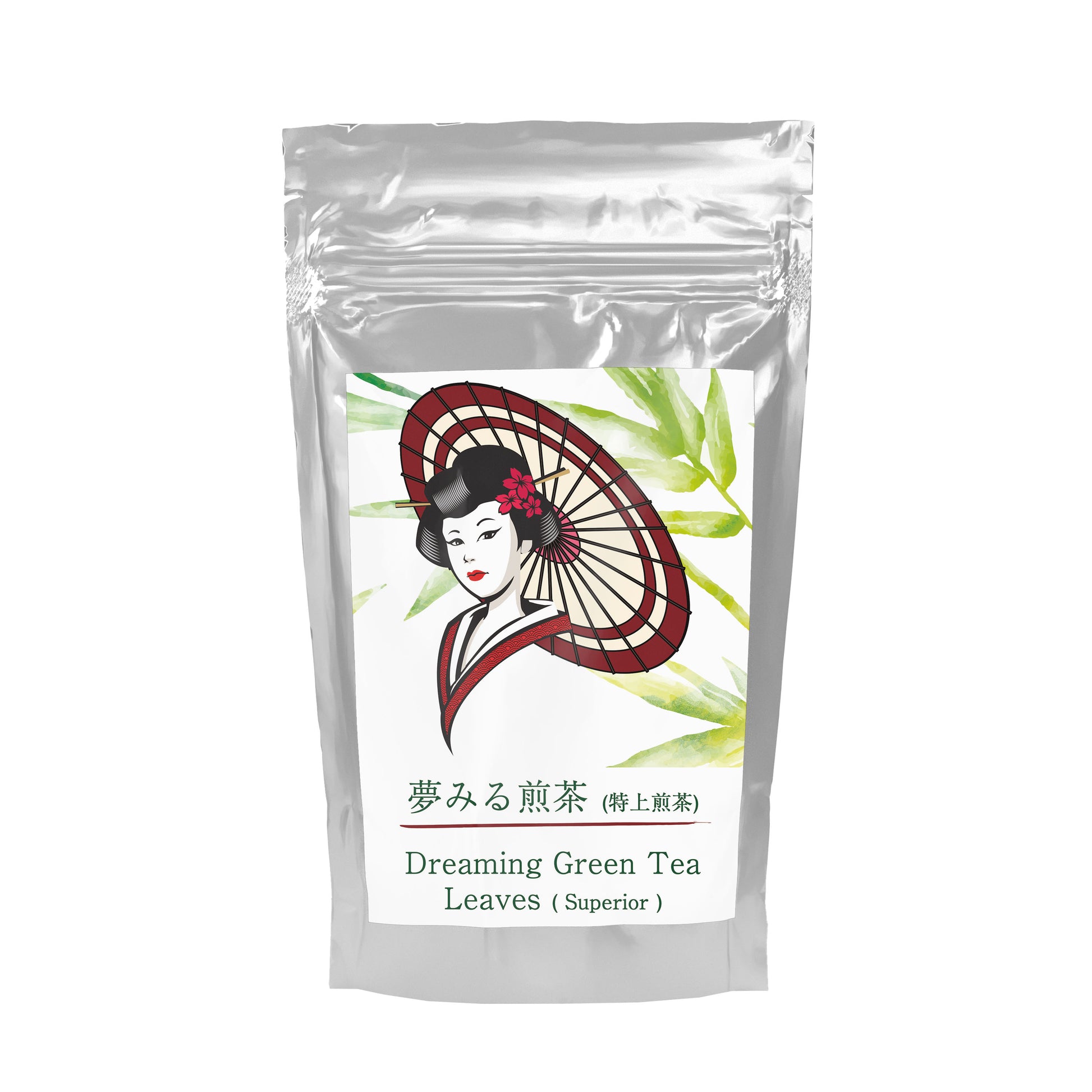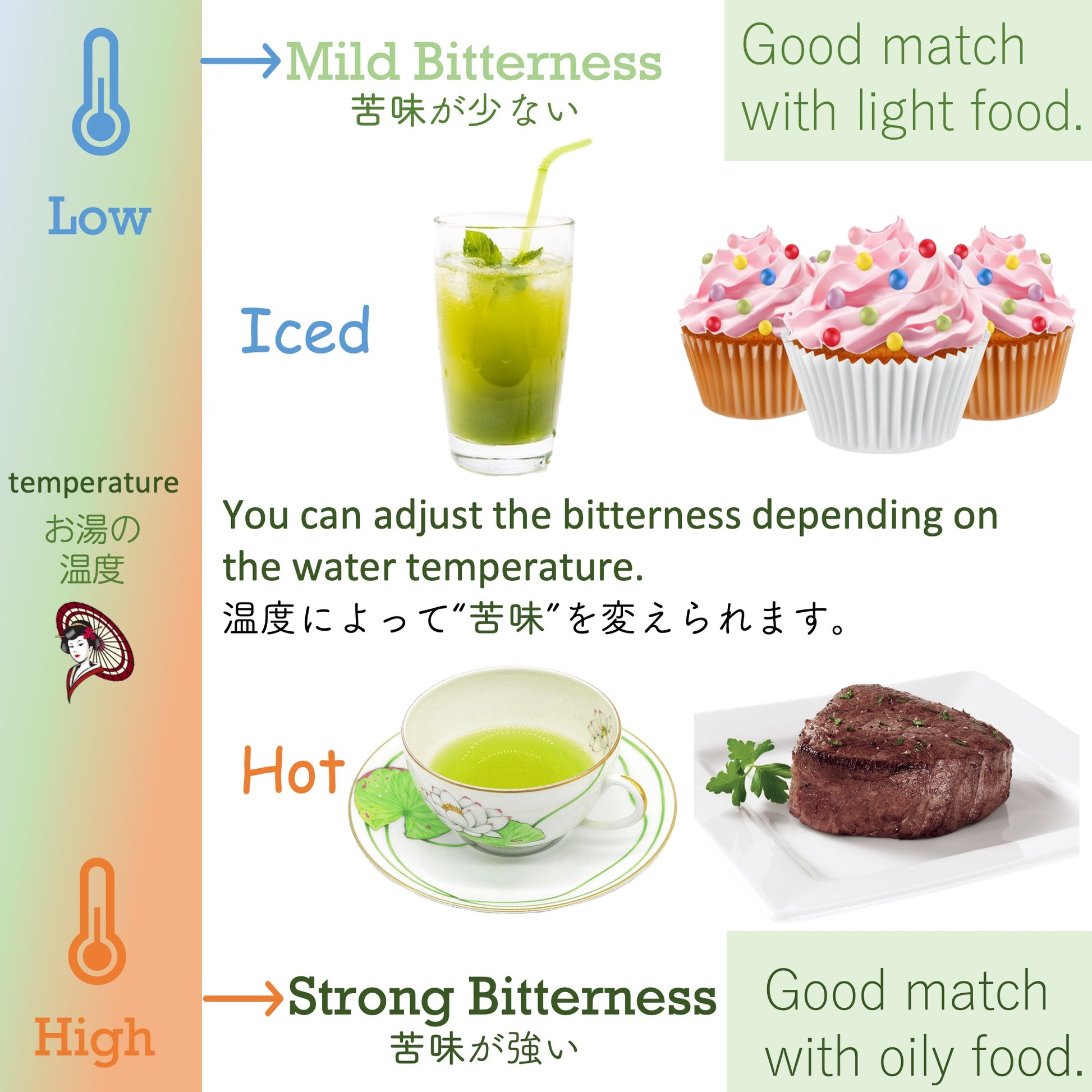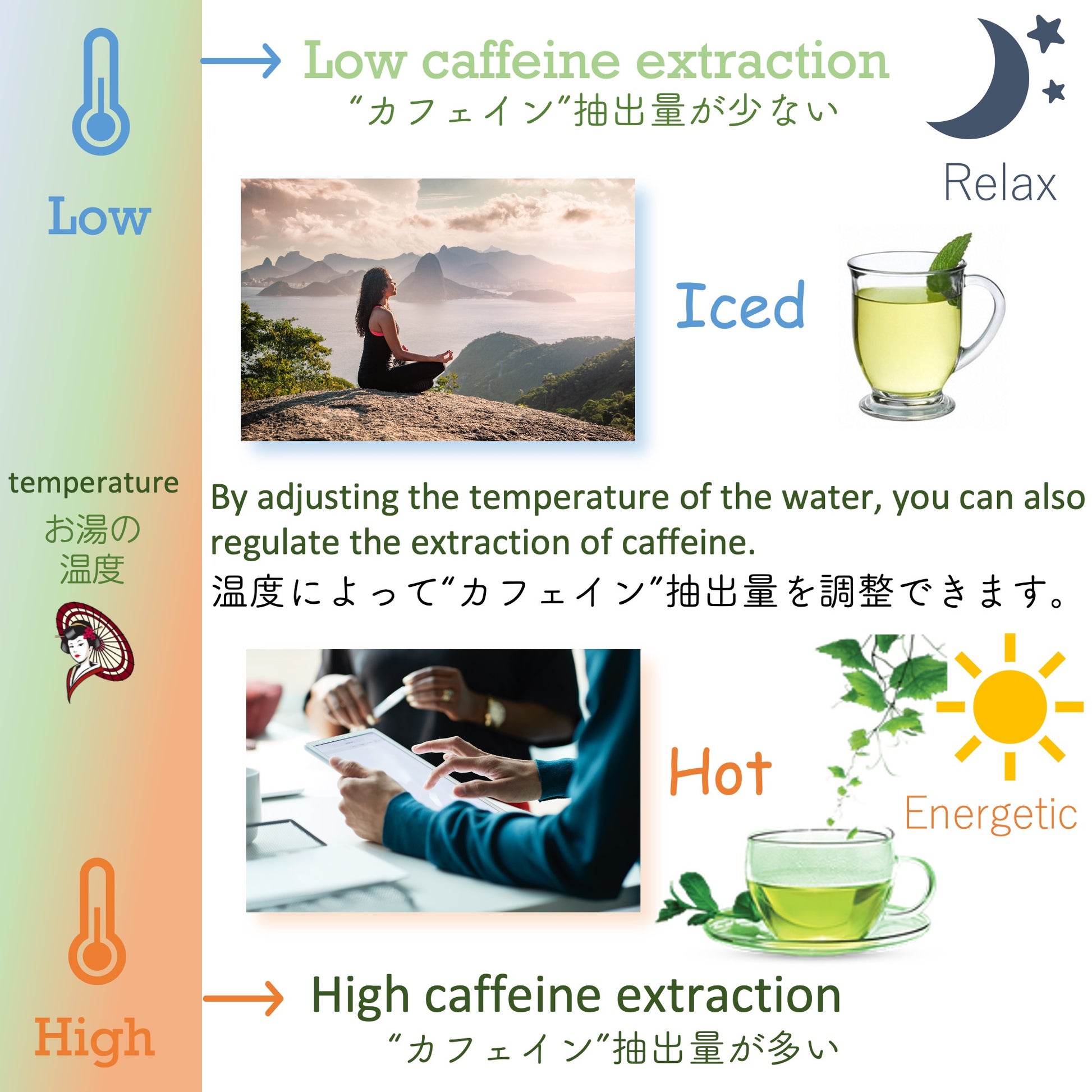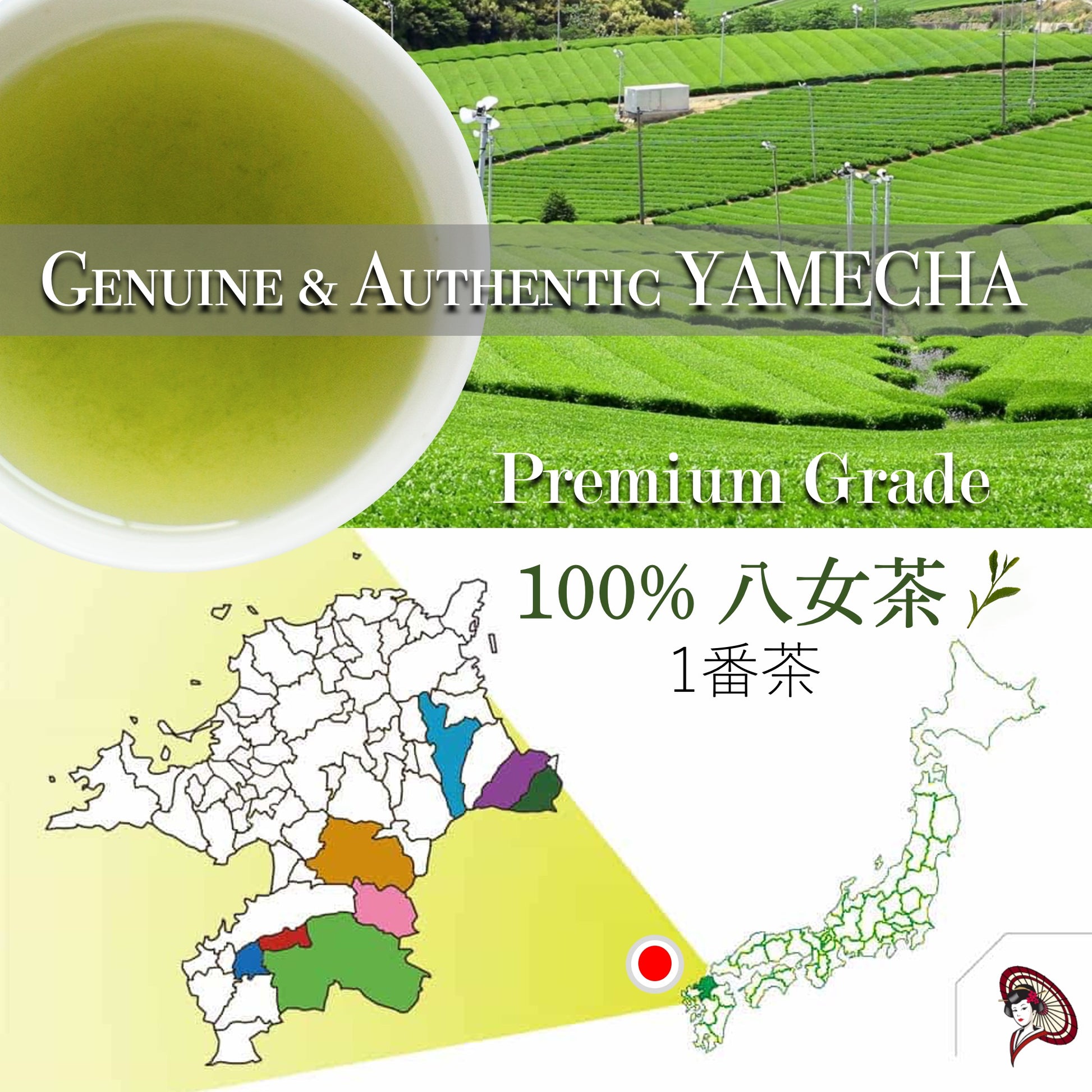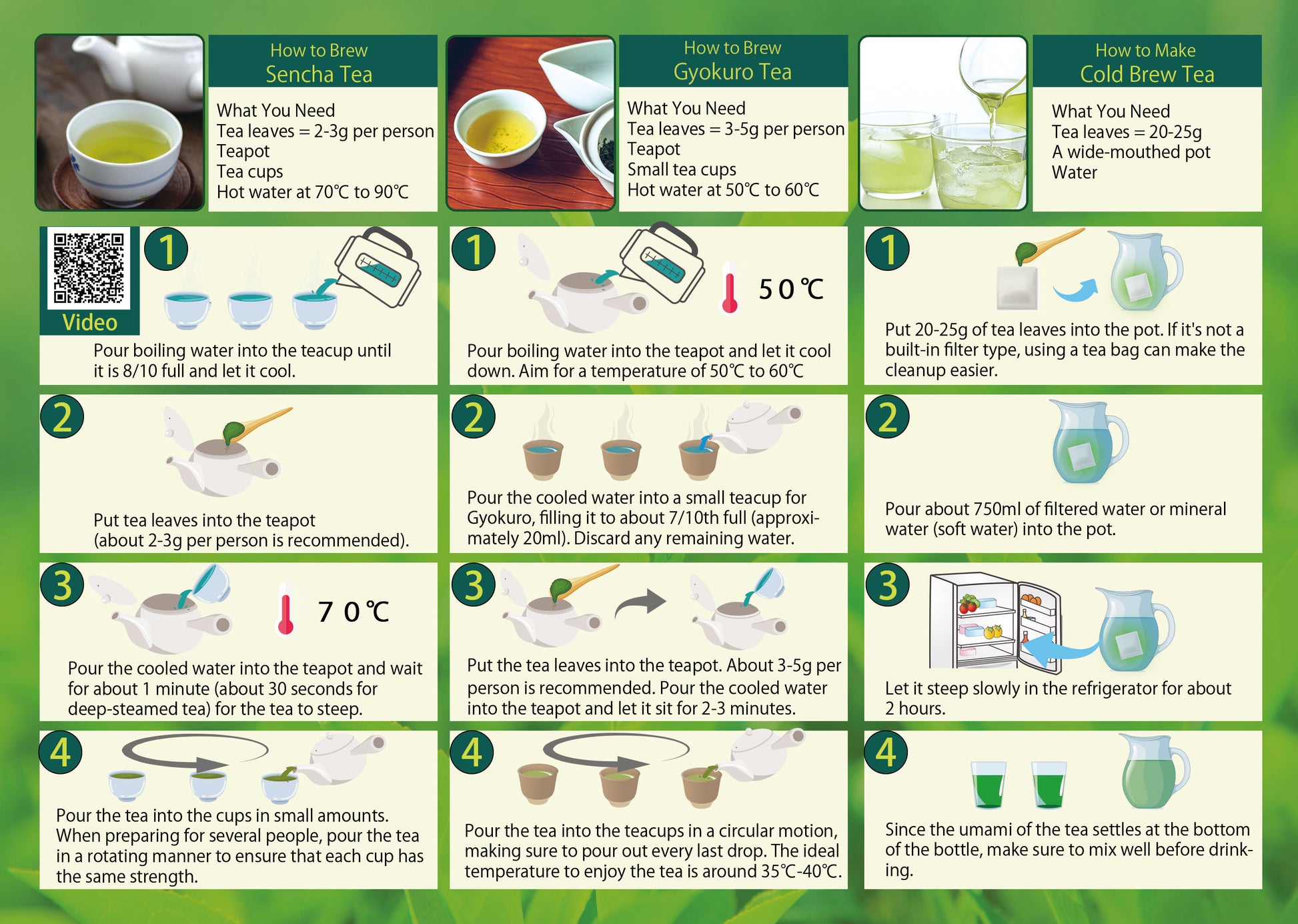Mukoh Matcha
Shincha New Tea [Dreaming Green Tea Leaves (Superior)] Hoshinocha, Hoshino tea, Yamecha, Yame tea, Sencha Japanese Green Tea 新茶 "夢みる緑茶"(特上煎茶 茶葉)星野茶 八女茶
Shincha New Tea [Dreaming Green Tea Leaves (Superior)] Hoshinocha, Hoshino tea, Yamecha, Yame tea, Sencha Japanese Green Tea 新茶 "夢みる緑茶"(特上煎茶 茶葉)星野茶 八女茶
无法加载取货服务可用情况
[Shincha] New Tea (Superior)
Shincha (新茶) refers to the first harvest of tea leaves in the season, typically picked in late April to early May in Japan. The term "Shincha" literally means "new tea." Here are the reasons why Shincha is highly appreciated and enjoyed in Japan:
Characteristics of Shincha
-
Freshness:
- Shincha is the freshest tea available, made from the first flush of tea leaves after winter dormancy. This results in a vibrant, lively flavor that is highly sought after.
-
Flavor:
- The flavor of Shincha is distinctively fresh and sweet, with a delicate, grassy aroma. It has a slight astringency but is generally less bitter than later harvests.
-
Nutritional Value:
- Shincha contains a higher concentration of nutrients, including vitamins (such as vitamin C), amino acids (like L-theanine), and catechins (a type of antioxidant). The nutrients are most potent in these early leaves.
-
Limited Availability:
- Because Shincha is only available for a short period during the early spring, it is considered a seasonal delicacy. The limited availability adds to its desirability.
Cultural and Traditional Significance
-
Seasonal Celebration:
- Shincha is associated with the arrival of spring and the renewal of life. It is a celebration of the new tea season, and enjoying Shincha is a way to appreciate the fresh start of the agricultural year.
-
Symbol of Purity and Freshness:
- The first flush of tea leaves symbolizes purity and freshness. In Japanese culture, these qualities are highly valued, making Shincha a prized product.
-
Tradition of Tea Drinking:
- Tea is an integral part of Japanese culture and daily life. Shincha represents the pinnacle of the tea-drinking experience due to its freshness and quality, aligning with the Japanese appreciation for seasonal and high-quality foods.
Reasons for Popularity
-
Exquisite Taste:
- The unique, fresh, and sweet taste of Shincha is a major reason for its popularity. Tea enthusiasts eagerly anticipate the first harvest each year to enjoy this special flavor.
-
Health Benefits:
- The high nutrient content and the associated health benefits of Shincha, including its antioxidant properties, make it a popular choice among health-conscious consumers.
-
Cultural Connection:
- For many Japanese people, drinking Shincha is a way to connect with cultural traditions and the natural cycles of the year.
-
Limited Edition Appeal:
- The limited-time availability creates a sense of exclusivity and urgency, encouraging people to buy and enjoy Shincha while it is fresh.
Shincha is cherished in Japan for its fresh and sweet flavor, high nutritional value, and cultural significance. The anticipation of the first tea harvest and the enjoyment of this seasonal delicacy are deeply rooted in Japanese tradition, making Shincha a beloved product every spring.
Differences Between "Hoshino Tea" and "Yame Tea"
Hoshino Tea and Yame Tea are both high-quality green teas produced in Fukuoka Prefecture, Japan. Despite their similarities, each has distinct characteristics. Here is a detailed explanation of their differences:
Yame Tea
Region:
- Yame Tea is produced mainly in Yame City, Fukuoka Prefecture. The city is the central production area for this tea.
Characteristics:
- Flavor: Yame Tea is known for its mellow and sweet taste with a smooth texture.
- Aroma: It has a deep aroma and a lingering aftertaste.
- Color: Yame Tea boasts a beautiful deep green color.
Cultivation Methods:
- Yame Tea is often grown using traditional shading methods (kabuse), where the tea leaves are shaded from sunlight for a certain period before harvest. This enhances the sweetness and umami.
Hoshino Tea
Region:
- Hoshino Tea is produced in the small area of Hoshino Village within Yame City. The village is located in a mountainous region with frequent mist, creating ideal conditions for tea cultivation.
Characteristics:
- Flavor: Hoshino Tea is considered particularly high-grade among Yame Teas, with a strong sweetness and rich umami.
- Aroma: It also has a deep aroma, but with a more delicate fragrance compared to regular Yame Tea.
- Color: Hoshino Tea has a vivid deep green color, making it visually appealing.
Cultivation Methods:
- Hoshino Tea is grown using shading techniques similar to Yame Tea but is often harvested by hand, ensuring meticulous quality control and the production of premium tea leaves.
Commonalities and Differences
- Commonalities: Both Yame Tea and Hoshino Tea are produced in Yame City, using shading cultivation methods that result in strong sweetness, umami, and deep aroma.
- Differences: Hoshino Tea is considered a superior grade within Yame Tea, limited to the Hoshino Village area, making it even higher in quality. Its production volume is lower, adding to its rarity.
Conclusion
Yame Tea and Hoshino Tea are both exceptional green teas representing Fukuoka Prefecture. Hoshino Tea, however, stands out for its superior quality and is produced in a limited area, making it a premium choice. Both teas offer outstanding flavor, aroma, and color, making them a delight for tea enthusiasts. Yame Tea is generally more accessible, while Hoshino Tea is often chosen for special occasions or as a gift.
"Dreaming Green Tea Leaves" (Superior) Sencha Yame Green Tea Leaves are a luxurious offering from Mukoh Matcha, designed for the discerning tea enthusiast. Sourced from the renowned Yame region, known for its superior tea cultivation, these leaves promise an exquisite tea experience. "Dreaming Green Tea" (Superior) Sencha variety is celebrated for its rich, umami flavor, vibrant green color, and aromatic fragrance. Each sip of "Dreaming Green Tea Leaves" (Superior) unfolds a harmonious blend of sweetness and subtle grassy notes, embodying the essence of traditional Japanese tea culture. Perfect for moments of reflection or a sophisticated tea ceremony, this Supreme selection invites you to savor the art of tea with every cup.
The distinction between "Supreme" and "Superior" green tea primarily revolves around quality, flavor complexity, cultivation methods, and processing techniques. These terms are often used by tea producers and sellers to indicate the grade and overall quality of the tea, with both aiming to signify levels of excellence above standard commercial grades.
Both Supreme and Superior green teas represent high-quality choices, the "Supreme" label is often reserved for the most exceptional teas with unmatched flavor complexity, rarity, and adherence to traditional cultivation and processing methods. "Superior" green tea, on the other hand, signifies a high level of quality that is more accessible and widely available, making it an excellent choice for everyday luxury.
🍵 High-Quality Leaves: Superior Green Tea is made from high-quality tea leaves, often harvested at the peak of freshness to ensure a rich flavor profile.
🍵 Origin and Prestige: Yamecha comes from the Yame region of Fukuoka Prefecture, Japan, renowned for producing some of the country's finest green teas.
🍵 Superior Quality: Known for its high-grade quality, Yamecha often wins national tea competitions in Japan, showcasing its supreme craftsmanship.
🍵 Distinct Flavor: Yame tea is celebrated for its deep, rich flavor, characterized by a perfect balance of sweetness (umami) and astringency.
🍵 Vibrant Color: The tea leaves produce a bright, vivid green color when brewed, a hallmark of its freshness and high chlorophyll content.
🍵 Aromatic Experience: Yamecha emits a delicate and inviting aroma, enhancing the tea-drinking experience with its floral and grassy notes.
🍵 Versatility in Brewing: Yamecha can be enjoyed in various forms, including Sencha, Gyokuro, and Matcha, offering a range of flavors and strengths to suit different preferences.
Instructions
-
Preheat Your Teapot: Begin by pouring hot water into your teapot and cups to preheat them. This step is crucial for maintaining the water temperature during brewing. Discard the warming water before adding your tea leaves.
-
Measure the Tea Leaves: A general guideline is to use about 2 grams of tea leaves for every 6 ounces (about 180 ml) of water. This equates to roughly 1 teaspoon of leaves per cup. However, you may adjust this ratio based on your personal taste preferences.
-
Heat the Water: The ideal water temperature for brewing Yame supreme green tea is between 70°C to 80°C (158°F to 176°F). If you don’t have a thermometer, boil the water and let it cool for about 2-3 minutes to reach the desired temperature. The lower temperature is key to preventing bitterness and ensuring the delicate flavors and aromas are properly extracted.
-
Brew the Tea: Place the tea leaves in the preheated teapot and gently pour the heated water over them. Cover the teapot with its lid to retain heat.
-
Steep Time: Allow the tea to steep for 1 to 2 minutes. Supreme green tea, especially from Yame, is prized for its subtle flavors, which can be overshadowed by over-steeping.
-
Serve: Pour the tea evenly into each cup, ensuring a consistent strength. If your teapot has a built-in strainer, pour through it; otherwise, use a separate tea strainer.
-
Enjoy Multiple Infusions: Yame supreme green tea leaves are capable of multiple infusions, each offering a unique taste experience. For each subsequent infusion, slightly increase the water temperature and steeping time to extract the full range of flavors.
分享
![Shincha New Tea [Dreaming Green Tea Leaves (Superior)] Hoshinocha, Hoshino tea, Yamecha, Yame tea, Sencha Japanese Green Tea 新茶 "夢みる緑茶"(特上煎茶 茶葉)星野茶 八女茶](http://mukoumatcha.com/cdn/shop/files/Dreaming-Ryokucha-Leaves-Superior-shincha1.jpg?v=1716103719&width=1445)
![Shincha New Tea [Dreaming Green Tea Leaves (Superior)] Hoshinocha, Hoshino tea, Yamecha, Yame tea, Sencha Japanese Green Tea 新茶 "夢みる緑茶"(特上煎茶 茶葉)星野茶 八女茶](http://mukoumatcha.com/cdn/shop/files/Dreaming-Ryokucha-Leaves-Superior-shincha0.jpg?v=1716103719&width=1445)
![Shincha New Tea [Dreaming Green Tea Leaves (Superior)] Hoshinocha, Hoshino tea, Yamecha, Yame tea, Sencha Japanese Green Tea 新茶 "夢みる緑茶"(特上煎茶 茶葉)星野茶 八女茶](http://mukoumatcha.com/cdn/shop/files/yamecha-yame-green-tea-leaves-mukoh-matcha.jpg?v=1715340343&width=1445)
![Shincha New Tea [Dreaming Green Tea Leaves (Superior)] Hoshinocha, Hoshino tea, Yamecha, Yame tea, Sencha Japanese Green Tea 新茶 "夢みる緑茶"(特上煎茶 茶葉)星野茶 八女茶](http://mukoumatcha.com/cdn/shop/files/3-quick-instant-green-tea-mukoh-matcha.jpg?v=1751028293&width=1445)
![Shincha New Tea [Dreaming Green Tea Leaves (Superior)] Hoshinocha, Hoshino tea, Yamecha, Yame tea, Sencha Japanese Green Tea 新茶 "夢みる緑茶"(特上煎茶 茶葉)星野茶 八女茶](http://mukoumatcha.com/cdn/shop/files/4-quick-instant-green-tea-mukoh-matcha.jpg?v=1751028293&width=1445)
![Shincha New Tea [Dreaming Green Tea Leaves (Superior)] Hoshinocha, Hoshino tea, Yamecha, Yame tea, Sencha Japanese Green Tea 新茶 "夢みる緑茶"(特上煎茶 茶葉)星野茶 八女茶](http://mukoumatcha.com/cdn/shop/files/5-quick-instant-green-tea-mukoh-matcha.jpg?v=1751028293&width=1445)
![Shincha New Tea [Dreaming Green Tea Leaves (Superior)] Hoshinocha, Hoshino tea, Yamecha, Yame tea, Sencha Japanese Green Tea 新茶 "夢みる緑茶"(特上煎茶 茶葉)星野茶 八女茶](http://mukoumatcha.com/cdn/shop/files/how_to_brew_green_tea_en.jpg?v=1715332260&width=1445)
